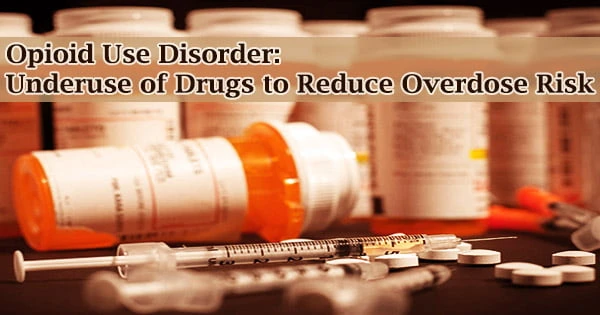Researchers from Washington University School of Medicine in St. Louis and Saint Louis University discovered that less than half of Americans who underwent treatment for opioid use disorder over a five-year period were given a potentially life-saving medicine.
Treatment with the drug was significantly less common for people who had polysubstance use disorder, which occurs when opioid users simultaneously abuse alcohol, methamphetamine, benzodiazepines, cocaine, or other drugs.
The findings add to the body of research indicating treatments for those who use opioids are typically underused.
“This is equivalent to giving those with advanced cancer a less aggressive treatment,” said senior investigator Laura J. Bierut, MD, the Alumni Endowed Professor of Psychiatry at Washington University. “It seems obvious to many of us that we should be giving the most aggressive and effective treatments to those who are most seriously ill.”
Buprenorphine, a potentially life-saving prescription, has been demonstrated to lower the chance of overdose, but a study of health insurance data involving around 180,000 individuals being treated for opioid use disorder revealed that about 53% of those patients were not given the medication on their own.
The percentage of patients who were administered buprenorphine fell to roughly 30% among those with polysubstance use disorder. The report is released online in JAMA Network Open on May 10, 2022.
“It’s concerning that the majority of people misusing multiple substances don’t appear to be getting the lifesaving medication they really need,” said first author Kevin Xu, MD, a resident physician in the Department of Psychiatry at Washington University.
“Even among those who used opioids exclusively, buprenorphine was prescribed only about half the time. While the data we analyzed predates COVID-19, the pandemic saw an escalation in overdoses, yet we’re still not seeing many eligible patients get buprenorphine prescriptions.”
For a long time, people thought that blocking the receptor would be just as good as using a drug, like buprenorphine, to activate the opioid receptor. But recent data suggest buprenorphine is substantially more effective. Now the challenge will be convincing more doctors to prescribe this safe and effective drug for the patients who need it.
Kevin Xu
In addition to Bierut and Richard A. Grucza, PhD, a professor in the Department of Family and Community Medicine at Saint Louis University, Xu and his colleagues also examined data collected from insurance companies for the American IBM MarketScan databases between 2011 and 2016.
Both individuals being treated for opioid use disorder and those being treated for combining opioids with other medicines are covered in-depth in the databases.
“The data we analyzed are a few years old,” Bierut said. “But we think this information can be extrapolated to what’s happening now because even more people using opioids or using opioids as well as other substances are showing up in emergency departments today. The problem has only gotten worse during the COVID-19 pandemic.”
Between early 2021 and early 2022, a recent 12-month span, over 107,000 Americans overdosed and died. In contrast, the U.S. Centers for Disease Control and Prevention recorded 70,237 drug overdose deaths in the United States in 2017 following years of rises in overdose deaths.
Prescriptions for buprenorphine have not kept up with demand. The fact that buprenorphine is an opioid in and of itself, according to Xu, is one of the reasons doctors are reluctant to administer it to patients with opioid use disorders.
Buprenorphine does not require daily visits to a clinic like methadone, another opioid used to treat heroin addiction; instead, it can be taken at home. However, due to the lack of supervision and the lack of information regarding the medication’s efficacy in people who abuse several drugs, some doctors are hesitant to administer it. The worries, according to Xu, seem to be unjustified.
“Buprenorphine appears to a safe opioid,” he said. “It’s specifically designed to be different from other opioid drugs in that it won’t cause a user to stop breathing, which pretty much every other type of opioid will do. That means it can be taken safely at home, which is very helpful, even essential, to recovery.”
The ability of buprenorphine to aid in preventing future overdoses was also compared to that of the medication naltrexone in the study. Since buprenorphine activates the same receptor as heroin and fentanyl, it is classified as a partial opioid agonist. On the other hand, naltrexone inhibits that receptor on brain cells.
The results of this trial showed that although both medicines reduced the likelihood of subsequent overdoses, buprenorphine did so more significantly than naltrexone.
“For a long time, people thought that blocking the receptor would be just as good as using a drug, like buprenorphine, to activate the opioid receptor,” Xu said. “But recent data suggest buprenorphine is substantially more effective. Now the challenge will be convincing more doctors to prescribe this safe and effective drug for the patients who need it.”
The National Institute of Mental Health, the National Institute on Drug Abuse, the National Institute of Alcohol Abuse and Alcoholism, the National Center for Advancing Translational Sciences, and the Agency for Healthcare Research and Sciences of the National Institutes of Health (NIH) are all funding this research.
Grant numbers R25 MH112473-01, R21 DA044744, U10 AA008401, R01 DA036583, 12 DA041449, UL1 TR002345, R24 HS19455.
















